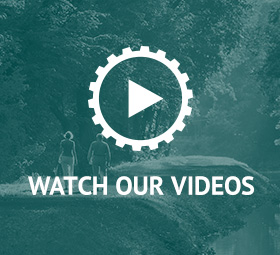Data Culture

Creating a culture of data driven sustainability.
The most important aspect of this process and the ultimate goal is to create a culture that embraces and uses data to inform, direct, and evaluate projects and programs. Changing a culture is not easy or something that happens overnight. But organizations that make a commitment to using data are more effective and productive. So how do you and your team do this? Here are five key steps.
-
Leadership and staff commitment
-
Robust, resilient, and reliable data
-
Institution wide involvement and transparency
-
Open-mindedness
-
Use a process
Leadership and staff commitment
To create a culture of data driven sustainability you need to have staff buy into the concept. If people do not see how this benefits them or the organization they will be unlikely to fully participate. To do this you need to have the leadership of your organization embrace this culture and make it a high priority for staff and the organization. When staff hear and see leaders and other staff members participating in a culture that uses data, they are more likely to engage. Here are some suggestions on ways to do this with your team or organization:
- Ask questions about how data can direct or inform programs at the very beginning of the planning process.
- Celebrate successful examples that clearly used data to improve the project, product, or program.
- Use data in your meetings, reports, and training.
- Share interesting data and facts on your blog or social media accounts.
- Recognize staff for trying even if the data isn’t perfect or the results are not what you expected.
- Have fun with it: Make pie charts with real pies!
Robust, resilient, and reliable data
You can’t have a data informed culture without data. But what is data? Well it comes in all shapes and sizes, but the key is finding the right data for your needs. Likely this will be your own internal data, so you will need to track, store, and analyze this in a consistent way. Make sure that your data is:
- Robust – This means your data is strong and healthy. It is usable data that you can turn into knowledge. You can use it in multiple ways and it can be updated.
- Resilient – Your data is able to withstand changes and challenges. It will last over multiple time spans and be useful to many different people. Data represents signals and not just noise.
- Reliable – Your data is trusted, has high quality, and a clear way that it was collected and stored. Its provenance is known and it is clearly stated how and how not to use it.
Institution wide involvement and transparency
You need to involve all of your staff if you want to have an vibrant data driven culture. You cannot do this by hiring one data analyst and making them do all the number crunching for the rest of the staff. By involving all staff you help make the process more transparent. Ways to do this include:
- Empower all staff, give them the training and access to tools that let them do some data analysis themselves.
- Clearly show the steps that you went through and not only the end result.
- Have teams across departments work on components of a project where they each play a role in the analysis.
Open-mindedness
You know that saying about assumptions? Being open minded is a critical step for encouraging a data driven culture. Often our preconceived notions and beliefs are not supported by data. Or when we look at a different data source we might see a different pattern. The data is not inherently “good” or “bad” based on the result. The data is the data.
- Share “bad” results. When things don’t go as expected use the data to find out what to change next time.
- Be open to saying “I don’t know” or “I don’t have data to back this up”.
- Be curious and critical in a positive way.
- Be open to new ideas or pathways that the data might suggest.
Use a process
So you are excited about creating a culture of data driven sustainability, but how do you do this? You need a trail map! Fortunately many people have tried and used versions of an adaptive management process. These are common in the technology and manufacturing fields. In effect they are cycles and the goal of each cycle is to learn from the previous cycle and make small but continuous improvements. This process can work for just about any field of work or organization because all organizations and staff repeat programs and build off of past products. Examples of adaptive management processes include:
Some of these processes might not seem like a good fit for your trail organization or have some terms and vocabulary that are not familiar. That is why we adapted these processes to a more trail friendly style. Check out our D&L Data Driven Sustainability Process to see how it works.










